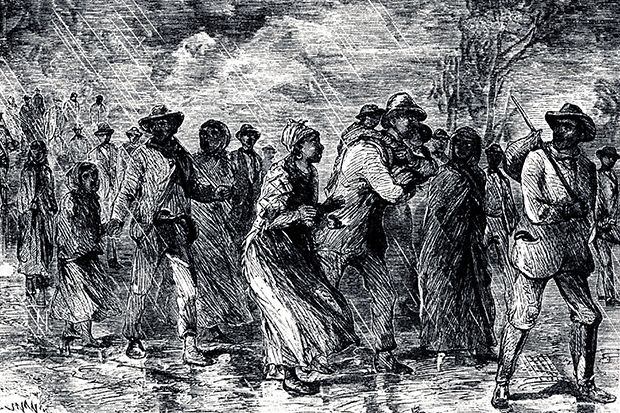It is difficult to write well about slavery. As with the Holocaust, the subject’s horrific nature lends itself too easily to mawkishness. This tendency is one that Colson White-head consummately avoids in this impressive novel.
The Underground Railroad, set before the American civil war, tells the story of Cora, a young slave on a cotton plantation in Georgia, and her escape with a fellow slave, Caesar, via the Underground Railroad, a secret network of routes and activists that enabled slaves to reach the free states of America’s north. It tells it beautifully. The book mixes genres to sublime effect: a straight parable of good versus evil that sees Ridgeway the relentless (and remorseless) slave catcher face off against Cora, it is also a darkly picaresque work, as our heroine encounters various mishaps, moments of genuine terror and moments of (often misplaced) hope as she flees, state by state, towards freedom. Here is a bleak Tom Jones for the 21st century.
But above all, it is a forensic examination of the horrors of slavery. The narrative opens with Cora’s grandmother, Ajarry, captured in Africa and sold. And then sold, and sold. The first time she wasn’t sure how much she cost, being part of a ‘bulk purchase’ where ‘able-bodied men and childbearing women fetched more than juveniles, making an individual accounting difficult.’ Further down the line, Ajarry becomes ‘another asset liquidated by order of the magistrate’ in ‘a hasty exchange, a drop in price occasioned by the realities of the local market’, before spending ‘three months as the property of a Welshman, who eventually lost her, three other slaves, and two hogs in a game of whist’.
Whitehead describes the transactional horrors of his subject levelly: the monetisation of the human body, and its subsequent industrialisation on the cotton farms of hell. His gaze takes everything in with neither judgment nor sentiment: his flowing and superb writing, meanwhile, instils both in the reader.
Cora negotiates the Underground Railroad (which in Whitehead’s imagining morphs from a metaphor into physical form) with Ridgeway in pursuit. He slowly becomes an Ahab in his mono-maniacal desire to capture her as she goes, literally, underground through its tunnels, made by men and women ‘who excavated a million tons of rock and dirt, toiled in the belly of the earth for the deliverance of slaves like her’.
‘The up-top world must be so ordinary compared to the miracle beneath,’ she muses, ‘the miracle you made with your sweat and blood.’ And in this sense, the novel is also ultimately about something else, too; the story of twin Americas: the America of the slavers; and of the slaves and those who fought to liberate them.
As Ridgeway, in one of his last utterances, finally —resignedly— says:
Most people think it’s a figure of speech…the underground. I always knew better. The secret beneath us, the entire time.







Comments